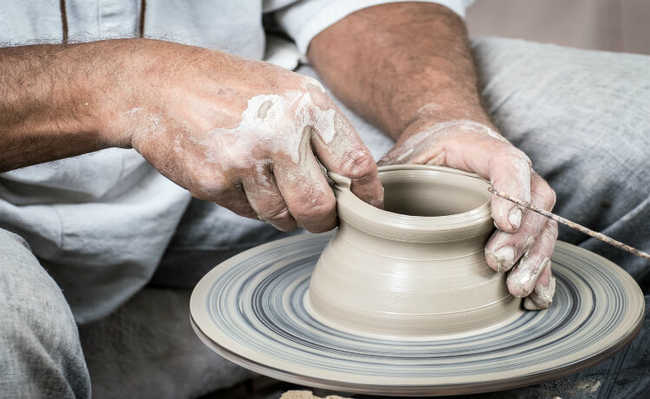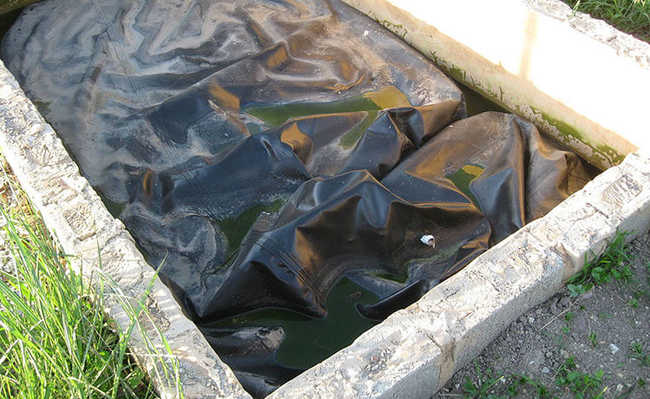Everything you need to know about the washing machine
Be a conscientious consumer and discover the best way to enjoy your washing machine

Edited and resized image by Chrissie Kremer is available on Unsplash
The washing machine is certainly an item present in most Brazilian homes. Therefore, acquiring an energy-efficient model, using it with the necessary care and, at the end of its useful life, disposing of it correctly, is essential in the life of the conscious consumer. Understand everything you need to enjoy a washing machine in the best way:
Choose an energy efficient model and learn how to clean it
The most efficient washing machine models are those that use only cold water and do not dry out. But despite being more energetically viable, these models facilitate the proliferation of bacteria. This discovery came after a multidrug-resistant pathogen was found on infant clothes in a neonatal intensive care unit at a German children's hospital - despite all normal precautions being taken to eliminate exposure to these superbugs.
Experts say energy-efficient washing machine models can be a home for bacteria because they wash clothes at lower temperatures. But it is also true that most concentrations of bacteria are not enough to make people seriously ill. The ideal is to occasionally clean the inside of the washing machine and dryer, even so as not to create resistant bacteria.
At the children's hospital, researchers found washing machines for home use, instead of the high-temperature industrial washers normally used in hospitals. Fortunately, the babies were only exposed to the pathogen. Klebsiella oxytoca, drug resistant, but not actually infected. But the findings beg the question: if the problem is a household washing machine, do ordinary people need to worry about bacteria? The answer is mixed.
This is because the resistant bacteria found in the study do not usually live in homes, and even if it were in this type of environment, it would only be able to cause serious infections in people with compromised immunity. Overall, most bacteria are benign or even beneficial.
We are all exposed to bacteria all the time, and most of the time we don't develop disease as a result. This means that if a family has a member with a recent prolonged hospitalization, hot water and prolonged drying should be considered.
If you live with an elderly relative, vulnerable newborn, or simply want to go the extra mile, you can take steps to keep your laundry and washing machine free of the worst bacterial contamination.
As bacteria tend to live in the soap drawer, rubber seals and washing drum, special care must be taken with washing machines kept in damp environments such as garages or sheds, as these are the perfect environments for bacteria prosper.
And germs like E. coli , salmonella and Klebsiella oxytoca can cause pneumonia, skin infections, abdominal pain, vomiting and diarrhea, especially in people with compromised immune systems. Also clean your machine's seals.
To clean the washing machine you will need:
Materials
- white vinegar;
- Sodium bicarbonate;
- Used toothbrush;
- cleaning cloths;
- Bowl.
washing the soap compartment
This is one of the parts of your machine that you should clean often so as not to leave residue on your clothes. Damaged whitish stains or white spots that remain on clothes after washing can be caused by the accumulation of products in this compartment. This garment needs to be cleaned regularly so it doesn't leave residue on your clothes.
To clean this part of the machine, you must remove it and, with a brush (which could be an old toothbrush), scrub it with a solution of water and vinegar. If the soap has hardened, just let the accessory soak for a few minutes in the liquid.
Some washers on the market have a soap and fabric softener dispenser, but if your washing machine does not have this function, clean the compartment more often to avoid product build-up on your clothes.
Sanitizing the filter
Depending on your washing machine model, the filter is different. Some models allow the removal of the part and others do not. The location and type of filter varies by brand and model, so follow the instructions contained in your washer manual. If your model allows, undo the piece and remove the clothes that accumulate. There is no need to use any chemical in this process. After the procedure, without rubbing, pass the filter under running water, and replace it.
maintenance cleaning
Choose the longest wash cycle in the program and let your machine fill up completely. Use the hot water option if your appliance has it. This will cause detergent residues accumulated in the machine to dissolve for disposal.
When your washer is full and starts to stir, add a quart of white vinegar and a teacup of baking soda. Wait for the ingredients to mix and pause the wash cycle. The mixture should act in 30 minutes to an hour.
Allow the washing machine to cycle completely. You should not use shorter programs to ensure that all vinegar and baking soda are removed from the appliance. With the water that comes out, it is possible to clean the floor or garage in your house.
External cleaning
During the time your machine is soaking in the vinegar and baking solution, you can prepare a mixture of the same ingredients to clean the outside of your washer. Mix about a tablespoon of baking soda and two tablespoons of vinegar in a small pot. Wet the toothbrush in the paste and clean the corners and edges of the machine that accumulate dirt.
To clean the outside, you can also use damp cloths, with or without diluted neutral detergent. Do not use window cleaner to clean the lid glass, it may damage the washer material.
By adopting a cleaning routine, you keep your washing machine clean inside and out and prevent odors and dirt. In a market where more and more products have a short life cycle and programmed obsolescence, this tip can extend the life of your equipment. To ensure that your clothes come out of the washing machine always clean.
Learn how to reuse water from your washes and dispose of an old washing machine.
Reuse water from the washing machine
Using water from the washing machine is a significant habit, as the equipment provides one of the biggest water expenses in the domestic environment, together with cleaning the garage, car and the routine habit of flushing. But what if you could reuse the washing machine water for these chores? There are many tricks that teach how to take water from the washing machine for reuse, one of the most efficient is using a modular cistern. You can understand the advantages, disadvantages and how to reuse washing machine water in the article: "Water reuse kit for washing machine is practical and saves".
Use ecological products to wash your clothes and avoid hitting plastic clothes
Using eco-friendly products to wash your clothes is one way to keep yourself safe and the environment healthy. You can use products ecofriendly such as baking soda, lemon, vinegar, essential oils, among others that you can check in the materials:
- 25 tips for using salt as a cleaning product
- The various uses of sodium bicarbonate
- White Vinegar: 20 Amazing Uses
- Essential Oils: A Complete Guide
- How to make liquid soap for washing clothes
- Positiv.A: learn about different cleaning products with reduced environmental footprint
- BioWash: discover different ecological cleaning products
Try to avoid purchasing clothes made of plastic fabric, such as polyester, and hitting the washing machine, as this generates microplastic. Understand this theme better in the articles: "Study reveals that washing clothes made with synthetic fibers release microplastic" and "What is slow fashion and why adopt this fashion?".
Dispose of your washing machine correctly
Generally, when the washing machine is not performing at its best, the "drama" of washing machine disposal, such a complex appliance, can cause headaches for anyone. The most common attitude is also the most incorrect: leaving it on public roads waiting for someone to take advantage of it. The problem with this unresponsible attitude is that one of the determinations of the PNRS (National Policy on Solid Waste) is the responsibility of the owner of the appliance for its correct disposal; otherwise, such attitude is subject to a fine. If the machine is in good condition, a used appliance store will gladly buy it. It is also possible to make a donation. If you are going to recycle it, look for companies specialized in the field. You can also use the collection service at home. Find the collection points closest to your home in the search engine on eCycle portal .










